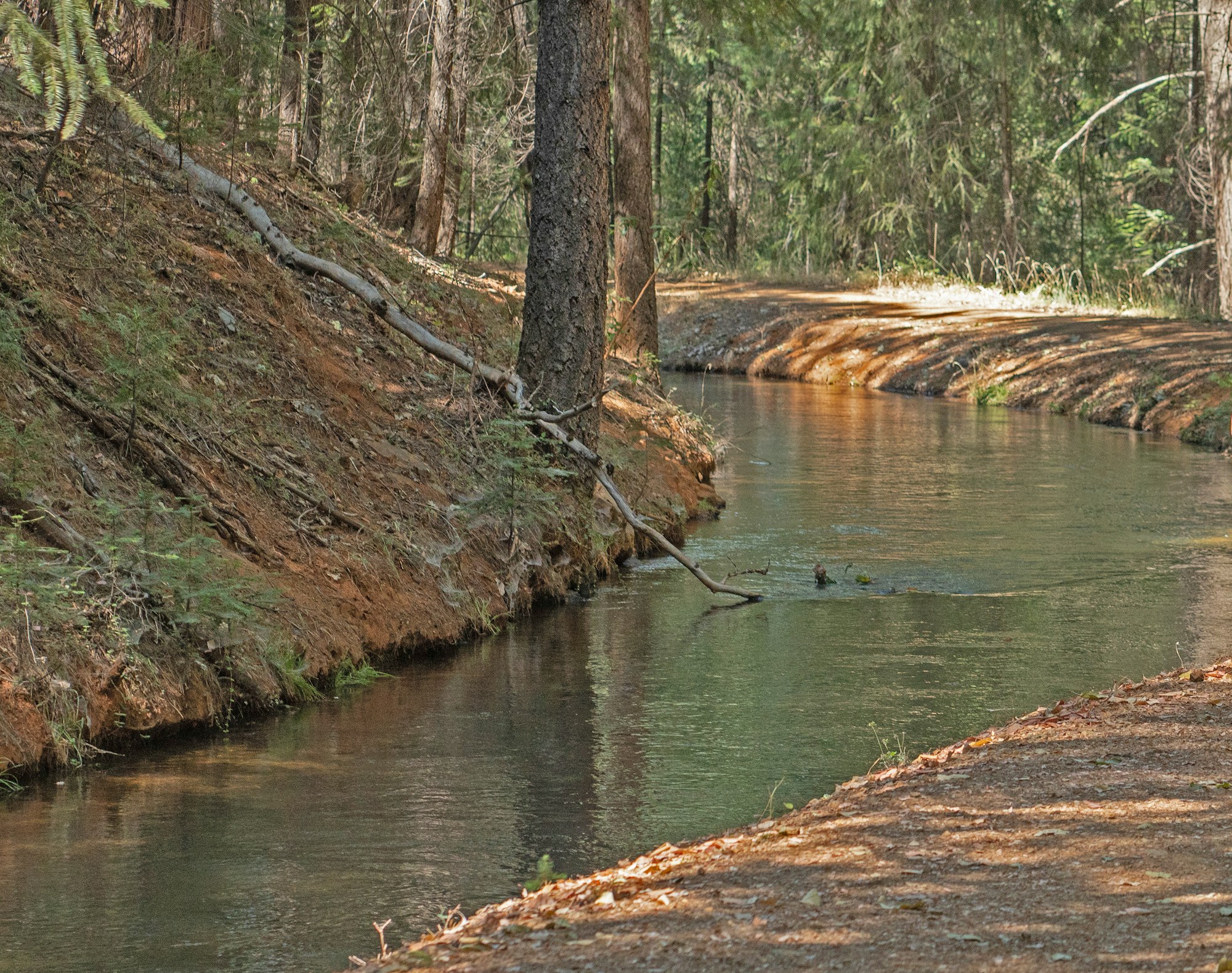NID Infrastructure Library

What is water infrastructure?
Infrastructure is everything it takes to get water to you.
At NID, this includes dams, reservoirs, treatment facilities, canals, conduits and pipes.
In addition, the District generates hydroelectricity, which requires powerhouses, afterbays and forebays.
For more than 100 years, NID has served customers in Nevada, Placer and Yuba counties. What began as an old reservoir and canal system serving mines during the California Gold Rush has been transformed into a modern water distribution system.
The District provides water to irrigate 32,000 acres of agricultural land, and annually it treats three billion gallons of water for drinking and household use. NID also generates enough hydroelectricity to power 60,000 homes.
All of this requires a complex network of diverse infrastructure.
Today, the two major distribution and storage systems are the Deer Creek System and the Bear River System. These are a mixture of canals, siphons, pipelines, and other water conveyance structures.
Let’s break down the infrastructure needed to deliver raw water for irrigation and treated water for drinking and household uses, as well as hydropower.
Dams

Simply, dams slow and control water. NID managers make sure the right amount of water is at the right place at the right time. River water rises behind dams, forming artificial lakes called reservoirs. The stored water can be used to generate electricity or to supply water for irrigation and for use in homes and businesses.
NID owns and operates 15 dams with different functions and sizes.
- The largest dam and reservoir is Rollins, which has a water capacity of about 66,000 acre-feet.
- Jackson Meadows Dam is the tallest at 195 feet.
The history of NID’s infrastructure dates back to the California Gold Rush. French Dam, constructed in 1858-59, is the District’s oldest dam still in use. Other older dams include the Bowman Rockfill dam (1869), and Faucherie (1872), Sawmill (1910) and Jackson, which have since been torn down and rebuilt. In the lower division, Van Giesen Dam at Combie Reservoir was built in 1928.
Learn more about each of the NID dams. Click here for the dams page.
Reservoirs

A reservoir is an enlarged lake created behind a dam. NID owns and operates 29 reservoirs, which vary greatly in size and function.
In the upper division, storage reservoirs capture snowmelt during the spring, and it is stored until District water managers release the water slowly over the following weeks and months for use by NID customers.
Another vital function is flood risk management. Reservoirs collect water during times of high rainfall and hold it back, reducing flood risk.
Fast facts about NID reservoirs:
- Most capacity: Rollins Reservoir
- Highest elevation: French Lake (6,666 feet)
- Lowest elevation: Combie Reservoir (1,610 feet)
Learn more about each of the NID reservoirs. Click here for the reservoirs page.

Powerhouses
NID’s seven hydroelectric powerhouses have the capacity to generate 87.90 megawatts and produce approximately 375 million kilowatt hours per year.
NID began producing hydropower in 1966 with the completion of the Yuba-Bear Power Project, which included the Chicago Park and Dutch Flat powerhouses. The Rollins powerhouse was added in 1980. To make use of existing water releases, small power plants were added during the 1980s at Bowman, Scotts Flat and Combie reservoirs.
Click here for the powerhouses page.
Water treatment plants

Water treatment is any process that improves the quality of water to make it appropriate for a specific end-use. At NID, it’s for drinking and household use.
The District treats and distributes more than 3.1 billion gallons of surface water each year. This water originates in the Sierra Nevada snowpack, originating at the Middle and South Yuba Rivers, the Bear River, the north fork of the North Fork American River, and Deer Creek.
NID routes and transports this water through canal and reservoir infrastructure to NID’s six treatment plants. Here, the water is treated to standards that exceed state and federal public health standards.
Click here to learn more about NID Treatment Plants.
Conveyance and delivery system

A conveyance system allows the transport of water from the origins in the High Sierra to District customers in the foothills. NID’s system dates back to the California Gold Rush and the ditches dug by miners in their quest to get rich.
When NID formed in 1921, the ditch systems were revamped and expanded to deliver irrigation water and also for use in the District’s hydropower aspirations. In the next 100 years, NID refined and expanded its system.
The numbers:
- Canals – 500 miles
- Flumes – 9 miles
- Penstocks – 1 mile
- Other/Creeks – 35 miles
- Siphons/Pipes – 400 miles
- Tunnels – 8 miles
Today, the two major distribution and storage systems are the Deer Creek System and the Bear River System. These are a mixture of canals, siphons, pipelines, and other water conveyance structures.
Read more about how water gets to you. Click here to the conveyance and delivery system page.
Read about the South Yuba Canal and the Cascade Canal System diversion.


